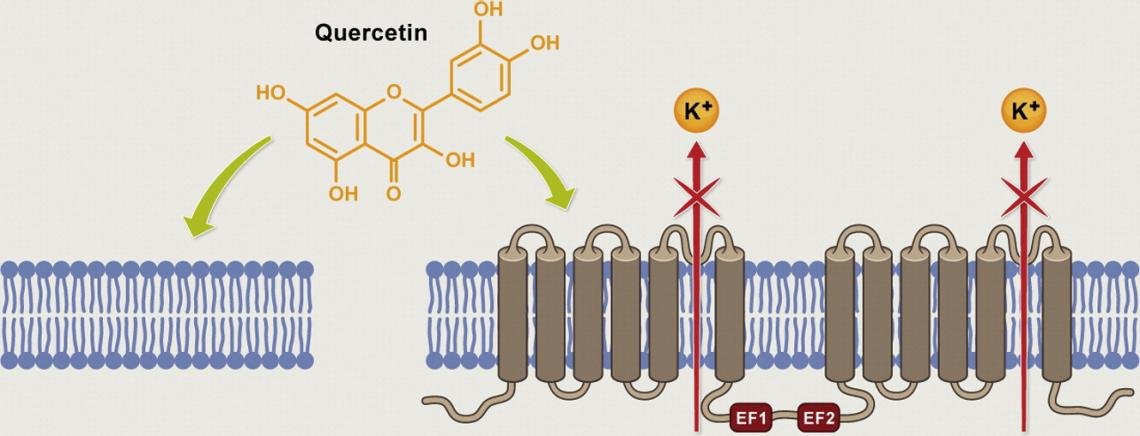
Characteristics of quercetin interactions with liposomal and vacuolar membranes
Bożena Pawlikowska-Pawlęga, Halina Dziubińska, Elżbieta Król, Kazimierz Trębacz, Anna Jarosz-Wilkołazka, Roman Paduch, Antoni Gawron, Wieslaw I. Gruszecki
Quercetin (3,3′,4′,5,7-pentahydroxyflavone) is claimed to exert many beneficial health effects. With application of 1H NMR (nuclear magnetic resonance) and FTIR (Fourier-transform infrared) techniques, quercetin interaction with liposomes formed with dipalmitoylphosphatidylcholine (DPPC) was analyzed. Patch-clamp technique was employed to study quercetin effects at single channel level of vacuolar membranes in the liverwort Conocephalum conicum. Light and electron microscopy were applied to study quercetin effects on human negroid cervix carcinoma cells (HeLa). Enzymatic measurements along with DPPH (1,1-diphenyl-2-picrylhydrazyl) bioassay were performed to investigate the influence of quercetin on antioxidant enzymes and reactive oxygen species (ROS) production. The inclusion of quercetin to the membrane exerted pronounced ordering effect on the motional freedom of lipids in the head group region as manifested by broadening of the 1H NMR spectral line representing the choline groups. FTIR analysis revealed quercetin incorporation into DPPC liposomes via hydrogen bonding between its own hydroxyl groups and lipid polar head groups in the C–O–P–O–C segment. Both, FTIR and NMR techniques indicated also quercetin spectral effects in the region corresponding to alkyl chains. Patch-clamp experiments showed that quercetin stabilizes tonoplast and promotes a close state of SV channels. Microscopic observations of HeLa cells revealed characteristic changes in ultrastructure and morphology of the examined cells in comparison to control cells. Pretreatment of HeLa cells with quercetin alleviated H2O2-induced cell injury by improving redox balance as indicated by the increase in glutathione content and SOD (superoxide dismutase) levels as well as by the decrease in ROS level. \In conclusion, the incorporation, distribution and the changes of biophysical properties of the membranes are very important for the effectiveness of phenolic compounds as antioxidant and anticancer factors.
